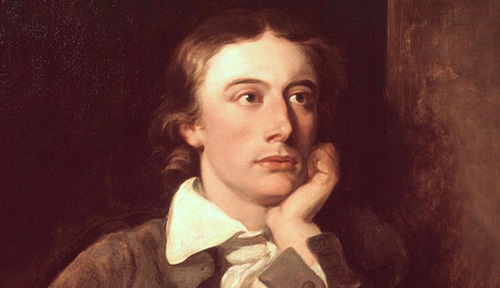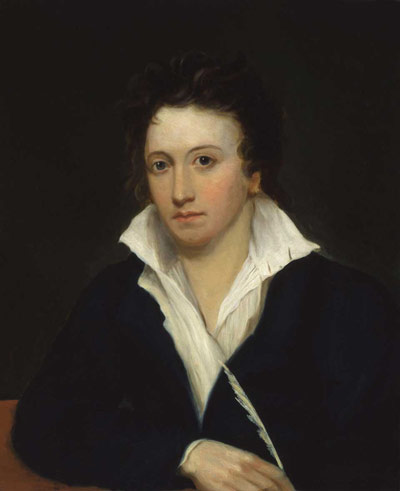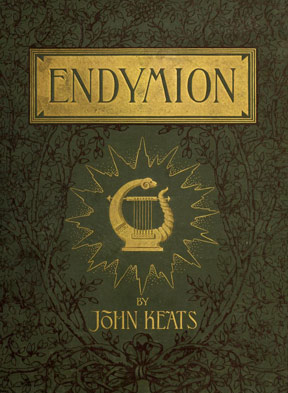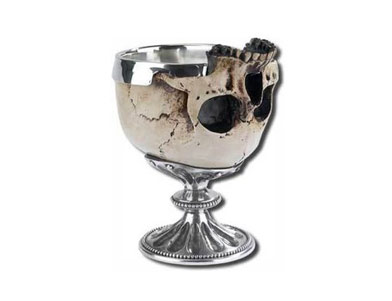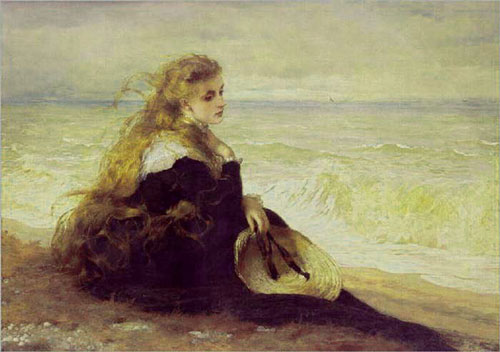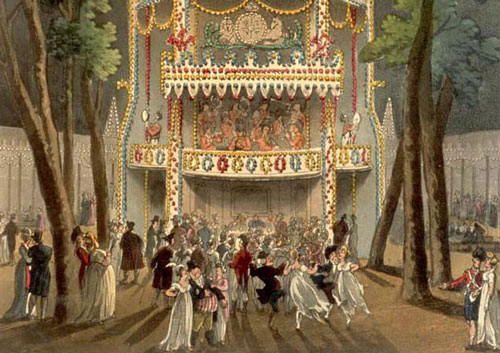With all their dreamy, poetic melodrama, our Romantic-era poets might not seem by today’s dubious standards ideal representatives of how a man should be. But they did show us how a man can be. And for that, I shall raise a glass on Halloween and celebrate that amazing trio of brilliant souls that burst so briefly on the firmament two centuries ago – like great comets of the past that no longer come to visit. In the short time they lived, they left us much to ponder and admire and, occasionally, to smile about too. Here are some glimpses …
Lines Inscribed Upon a Cup Formed from a Skull by Lord Byron, 1808
A cup made from a human skull, once owned by Lord Byron.
Start not—nor deem my spirit fled:
In me behold the only skull
From which, unlike a living head,
Whatever flows is never dull.
I lived, I loved, I quaff’d, like thee:
I died: let earth my bones resign;
Fill up—thou canst not injure me;
The worm hath fouler lips than thine.
Better to hold the sparkling grape,
Than nurse the earth-worm’s slimy brood;
And circle in the goblet’s shape
The drink of Gods, than reptiles’ food.
Where once my wit, perchance, hath shone,
In aid of others’ let me shine;
And when, alas! our brains are gone,
What nobler substitute than wine?
Quaff while thou canst—another race,
When thou and thine like me are sped,
May rescue thee from earth’s embrace,
And rhyme and revel with the dead.
Why not? since through life’s little day
Our heads such sad effects produce;
Redeem’d from worms and wasting clay,
This chance is theirs, to be of use.
Love’s Philosophy, by Shelley, 1820
The fountains mingle with the river,
And the rivers with the ocean;
The winds of heaven mix forever
With a sweet emotion;
Nothing in the world is single;
All things by a law divine
In another’s being mingle–
Why not I with thine?
See, the mountains kiss high heaven,
And the waves clasp one another;
No sister flower could be forgiven
If it disdained its brother;
And the sunlight clasps the earth,
And the moonbeams kiss the sea;–
What are all these kissings worth,
If thou kiss not me?
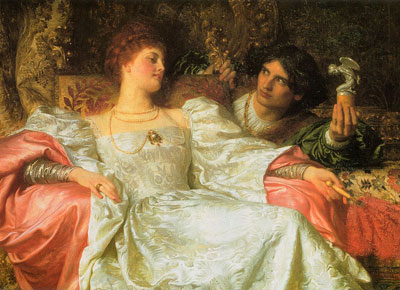
An Offering, by Sir Frank Dicksee, 1898.
